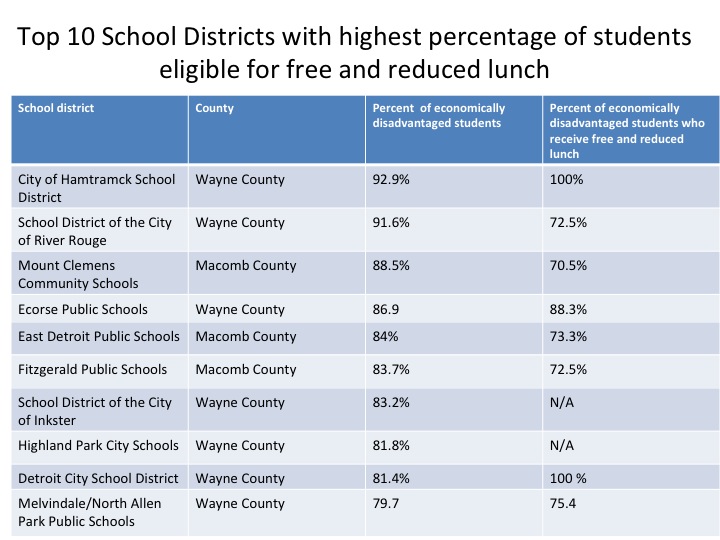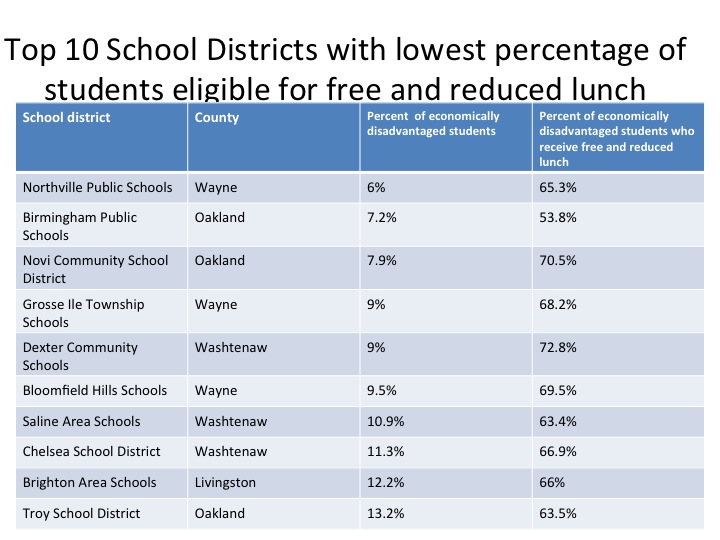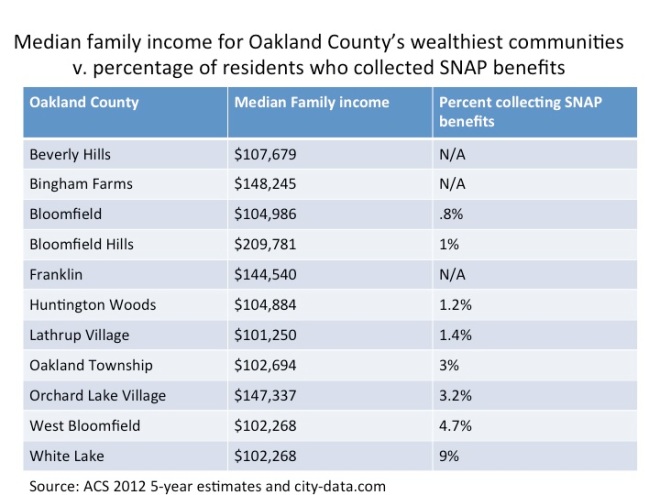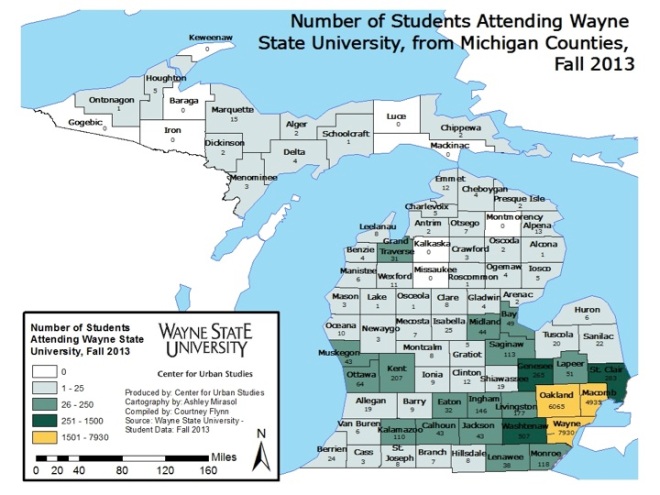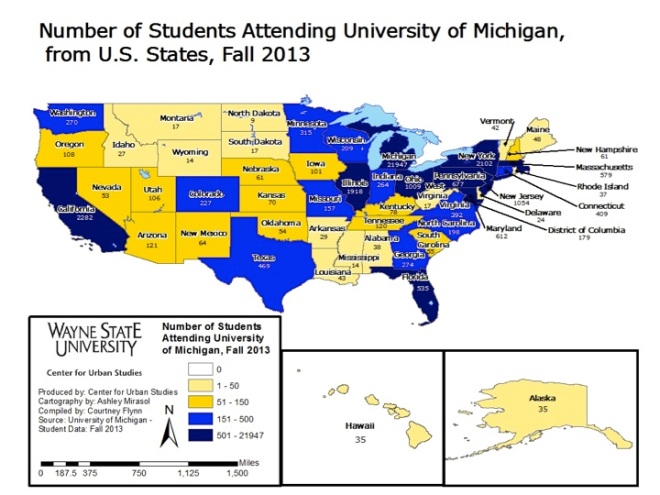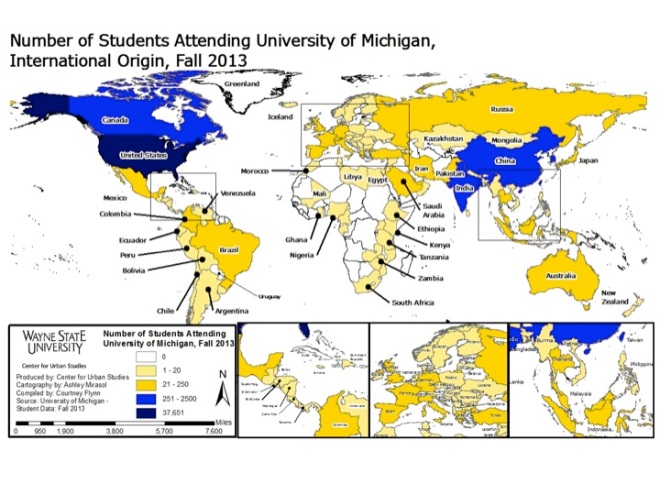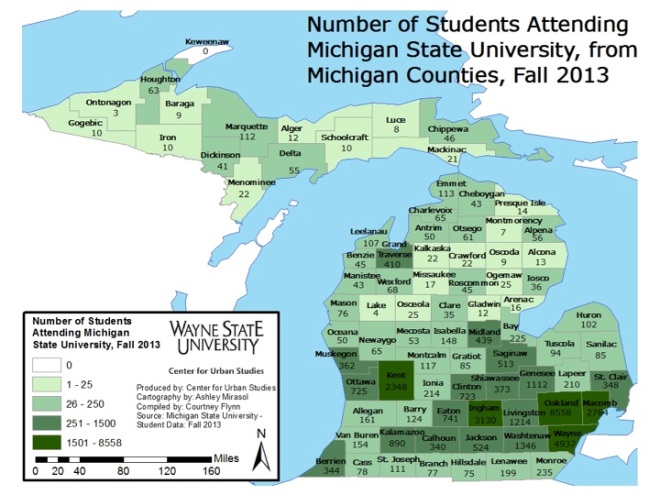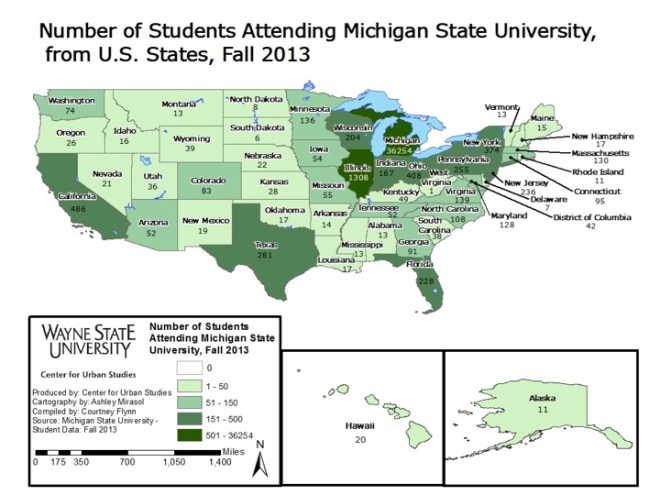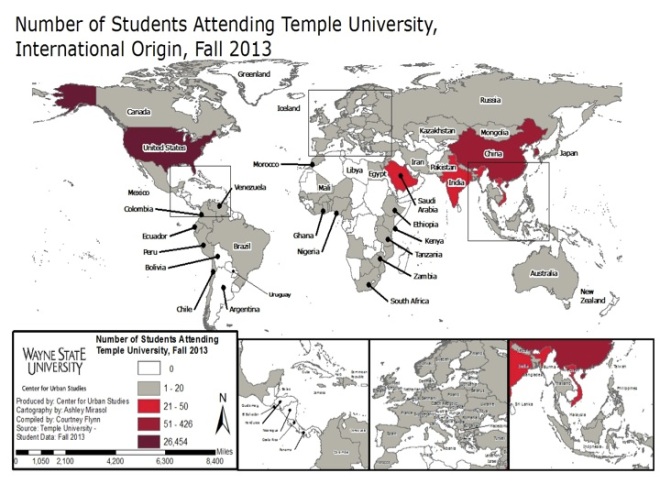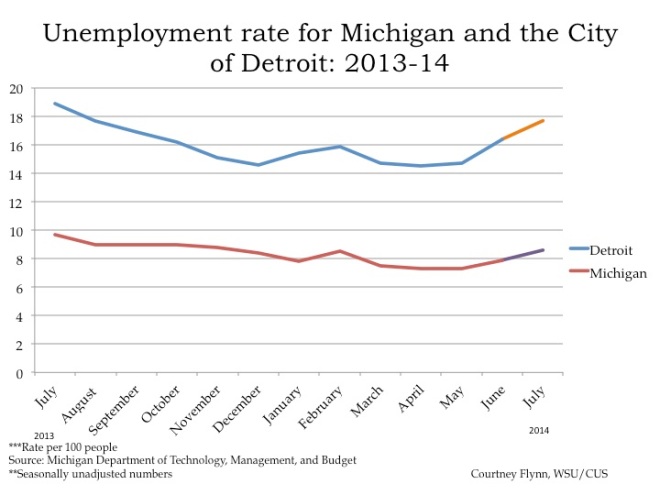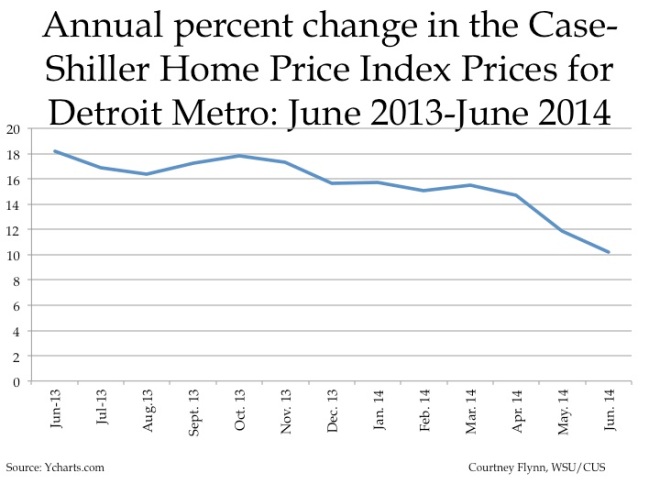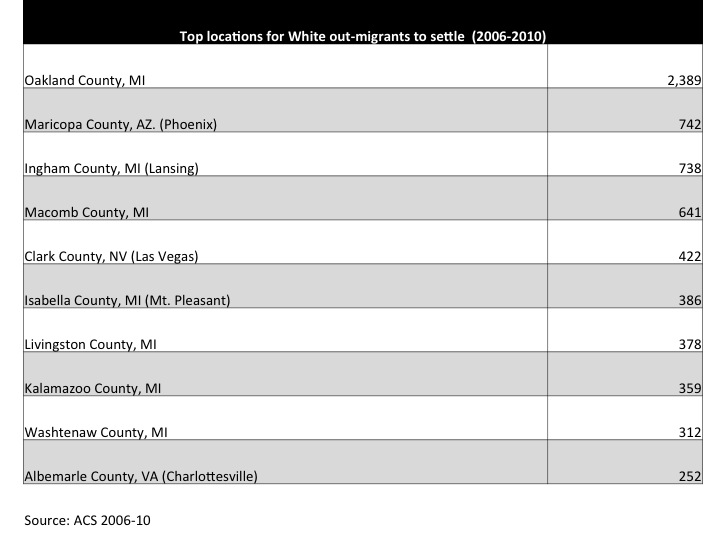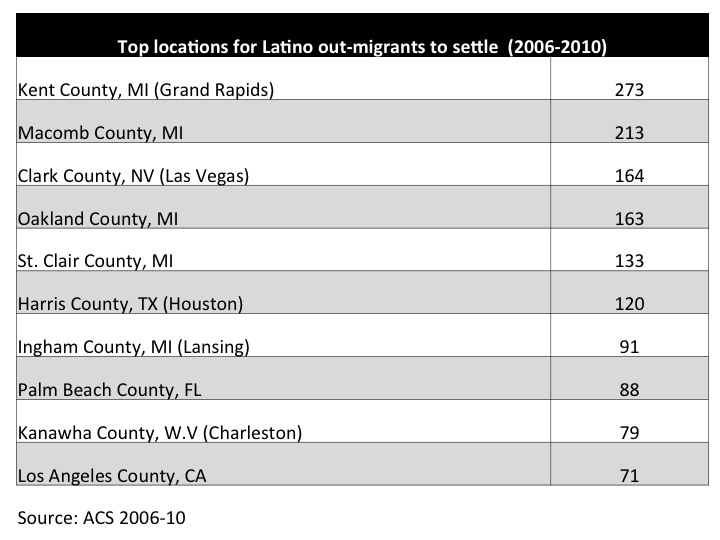Just as individuals in Michigan are eligible for the U.S. Department of Agriculture’s Supplemental Nutritional Assessment Program (SNAP) program, children in economically disadvantaged families are eligible for nutritional assistance while attending school. Based on the annual income of a child’s family, he or she is eligible for such nutritional assistance through the free and reduced lunch program. In this post, we examine the percentage of students who are eligible for this program in each district and the percentage of students who actually receive the benefit.
First though, we outline what those eligibility standards were in the state of Michigan for the 2013-14 school year. According to the Michigan Department of Education, economically disadvantaged students are those who are eligible, according to the chart shown below, to receive free and reduced lunch benefits through the U.S. Department of Agriculture.
| Scale for Free Meals or Free Milk | Scale for Reduced Price Meals | ||||
| Total Family Size | Annual | Monthly | Annual | Monthly | |
| 1 | $14,937 | $1,245 | $21,257 | $1,772 | |
| 2 | $20,163 | $1,681 | $28,694 | $2,392 | |
| 3 | $25,389 | $2,116 | $36,131 | $3,011 | |
| 4 | $30,615 | $2,552 | $43,568 | $3,631 | |
| 5 | $35,841 | $2,987 | $51,005 | $4,251 | |
| 6 | $41,067 | $3,423 | $58,442 | $4,871 | |
| 7 | $46,293 | $3,858 | $65,879 | $5,490 | |
| 8 | $51,519 | $4,294 | $73,316 | $6,110 | |
| For each additional family member add: | |||||
| $5,226 | $436 | $7,437 | $620 | ||
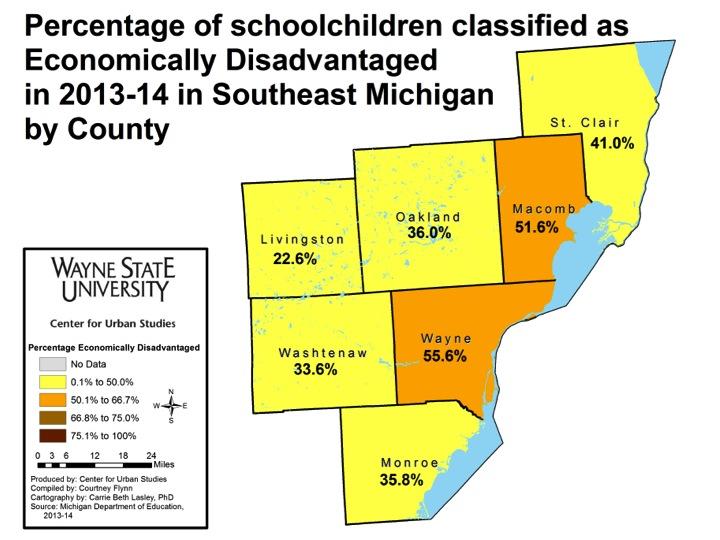
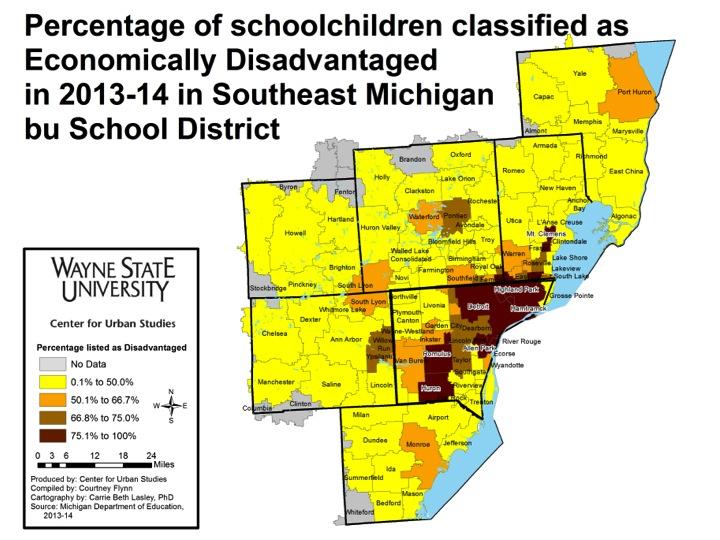
In the region, Wayne County had the highest percentage of students eligible for free and reduced lunch at 55.6 percent.
Within Wayne County, the School District of the City of Hamtramck had the highest percent of eligible students at 92.9 percent.
Overall, 19 of the 34 public school districts in Wayne County had 55.6 percent or more of their student populations eligible for free and reduced lunch during the 2013-14 school year. Of those 19, eight of the school districts had 80 percent or more of the students eligible for free and reduced lunch benefits and of those eight, two districts had 90 percent or more of the students eligible.
On the opposite end of the spectrum, Northville Public Schools had the lowest percent of students eligible at 6 percent, followed by Grosse Ile Township Schools at 9 percent. There were only four school districts in Wayne County where 20 percent of less of the student population was deemed economically disadvantaged.
In Macomb County, which had the second highest percentage of free and reduced lunch eligible students in the region at 51.6 percent, there was not one district where 20 percent or less of the student population was eligible for free and reduced lunch. Ten of the 21 school districts were above 51.6 percent county average though, with Mount Clemens Community Schools having the highest percentage at 88.5 percent.
Livingston County had the lowest county average of eligible students at 22. 6 percent. With only five public school districts, Howell Public Schools had the highest percentage of eligible students at 29.6 percent and Brighton Area Schools had the lowest at 12.2 percent.
Overall, Wayne County had the most number of school districts in the top 10 with the highest percent of students eligible for free and reduced lunch while Wayne, Oakland and Washtenaw counties each had three districts in the top 10 with the lowest percent of eligible students. It is notable that among those districts with lowest percentages of eligible students, a substantially lower percent of those eligible actually received benefits.
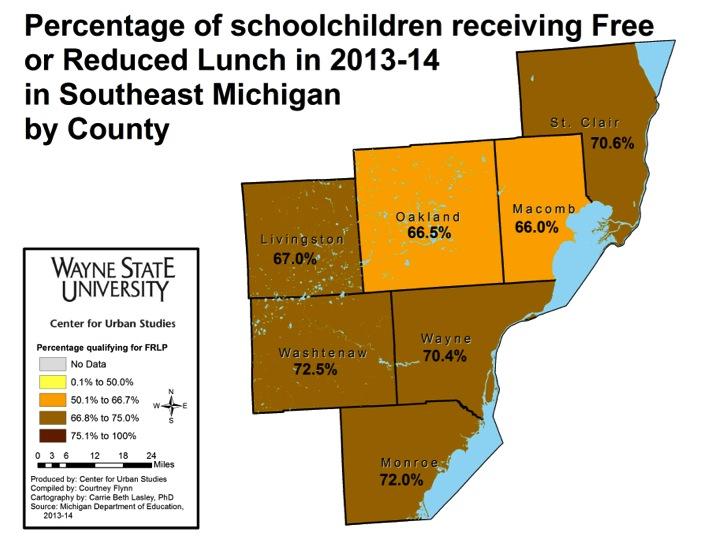
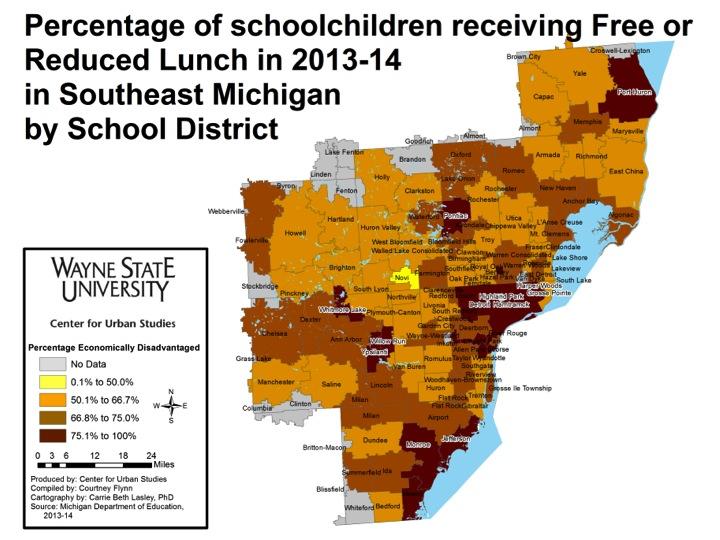
Although a student may be eligible for free and reduced lunch benefits, it does not mean they receive them. The two maps above show the percentage of eligible students who collected these benefits.
For this, Washtenaw County had the highest percentage of students who collected these benefits. In Washtenaw County, 33.6 percent of the student population was considered economically disadvantaged and of that, 72.5 percent of the students collected the benefits they were eligible for. Students in Ypsilanti Public Schools had the highest percentage of eligibility in the county at 68.9 percent and the second highest collection rate at 78.9 percent. In Willow Run Community Schools 100 percent of the eligible students (68.3 percent of the student population) received free and reduced lunch.
In Macomb County, although it had the second highest percentage of students eligible for free and reduced lunch benefits, it had the lowest percentage of students who received the benefit (66 percent). Armada Area Schools, which had the lowest percentage of students eligible for such benefits in the county (21.4 percent) also had the lowest percentage of students who received them (54.9 percent). East Detroit Public Schools had the highest percent of students who collected free and reduced lunch benefits at 73.3 percent although 84 percent of the student population was eligible for such benefits.
The School District of the City of Hamtramck, which had the highest percentage of eligible students in the region at 92.9 percent, had 100 percent of those students receive benefits. In Wayne County, the only other district where 100 percent of the eligible students collected free and reduced lunch benefits was Westwood Community School District; 69.9 percent of these students were eligible.
